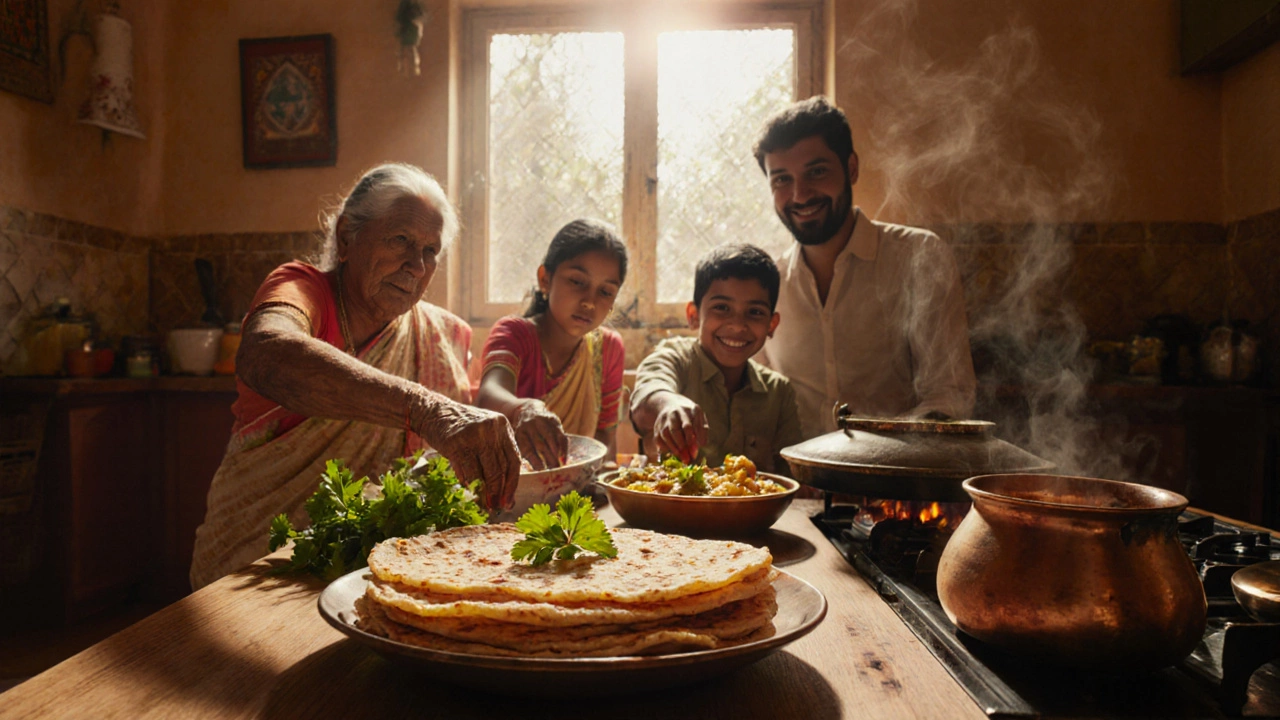
India’s Most Popular Food: Roti (Chapati) Explained
Discover why roti (chapati) is the most eaten Indian food, its nutrition, how to make it, regional variations, and tips for perfect flatbreads.
When working with chapati, a thin, unleavened Indian flatbread, you are dealing with a food that sits at the heart of daily meals for millions. It belongs to the broader family of roti, any round flatbread made from various flours, and its primary ingredient is wheat flour, finely milled whole‑grain flour called atta. The cooking surface, a tawa, a flat iron griddle used in Indian kitchens, gives chapati its signature soft texture and occasional puff. Chapati is a type of Indian flatbread that requires nothing more than flour, water, a pinch of salt, and a hot pan. Its simplicity makes it a perfect canvas for cultural variations, from the spicy versions in Gujarat to the softer, fluffier style in Punjab. Because it is made with whole‑grain wheat, chapati packs fiber, protein, and essential minerals, offering a healthier alternative to refined‑grain breads. In many homes, a fresh stack of hot chapatis signals that dinner is ready, and it pairs effortlessly with curries, dals, and fresh vegetables.
To get the best chapati results, treat dough preparation like a science. Start with a bowl of atta and add just enough water to form a smooth, non‑sticky ball. Let the dough rest for at least 15 minutes – this relaxes the gluten and makes rolling easier. When you roll, aim for a uniform 6‑inch circle about 2‑3 mm thick; uneven thickness leads to uneven puffing on the tawa. Heat the tawa until a few drops of water sizzle, then place the rolled dough onto it. After a minute, flip it; you’ll see tiny bubbles forming. Press gently with a cloth or spatula; the chapati should puff up, indicating air trapped inside. If it doesn’t puff, the tawa might be too cool or the dough too stiff. Once puffed, give it a quick, brief roast directly over the flame for a few seconds – this adds a subtle char that many love. Serve hot, brushed lightly with ghee or butter for extra richness. Chapatis freeze well; wrap them in a clean cloth and store in an airtight bag for up to a month, then reheat on a tawa or micro‑wave before serving.
Beyond the basics, chapati adapts to many regional twists. Some cooks substitute part of the wheat flour with millet or sorghum for a gluten‑free version, while others add spices like cumin or ajwain to the dough for a fragrant bite. Pairing ideas are endless – think of a hearty dal makhani, a tangy tomato chutney, or a simple stir‑fried leafy greens. The versatility of chapati also makes it a convenient tool for wrapping leftovers, creating quick wraps for lunch. Common mistakes include over‑kneading the dough, which makes chapatis tough, or cooking on a low‑heat tawa, which leaves them dry. By paying attention to dough consistency, heat level, and timing, you can consistently produce soft, pliable chapatis that complement any Indian dish.
The collection below brings together articles that dive deeper into chapati’s cultural story, nutrition facts, cooking hacks, and creative recipes. Whether you’re a beginner looking for step‑by‑step guidance or an experienced cook seeking new twists, you’ll find practical insights that build on the basics covered here. Explore the range of posts to expand your flatbread repertoire and enjoy the simple pleasure of homemade chapati.

Discover why roti (chapati) is the most eaten Indian food, its nutrition, how to make it, regional variations, and tips for perfect flatbreads.